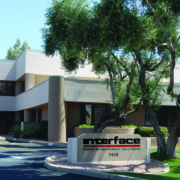Understanding Uncertainty in Load Cell Calibration
 In force measurement testing, accuracy is the most critical factor in ensuring the data you collect can help to identify challenges, failures and opportunities in the product design and development cycle. Here at Interface, we have mastered the art of load cell accuracy by employing a vertically integrated manufacturing process that allows us to control the development of our products most critical components.
In force measurement testing, accuracy is the most critical factor in ensuring the data you collect can help to identify challenges, failures and opportunities in the product design and development cycle. Here at Interface, we have mastered the art of load cell accuracy by employing a vertically integrated manufacturing process that allows us to control the development of our products most critical components.
Even the most high-end manufactured load cells and finely tuned components endure accuracy degradation over continued use. Therefore, we have also invested in equipment and talent with deep expertise in load cell recalibration, as well as offering gold and platinum standard calibration systems to customers. Recalibration is recommended on an annual basis, or of course, whenever our customers feel they need to confirm they are getting the right data out of their load cells.
One of the key factors of calibration and recalibration is understanding how to estimate practical uncertainty in load cell calibration. Measurement uncertainty is defined as an estimate of the range of measured values within which the true value lies or, alternatively, the degree of doubt about a measured value. In every application, there will be an uncertainty requirement on the force measurement. The equipment used to make the measurement must be traceable to a realization of the SI unit of force (the newton) within this required uncertainty.
Each application is different in terms of its uncertainty requirement. For instance, an application testing force in the aerospace and defense or medical sector will include a much more stringent uncertainty requirement than something like a commercial scale used to measure someone’s weight or food. It is critical to understand the uncertainty requirement on the application to ensure the force measurement device used is calibrated to handle the project.
How does one go about estimating uncertainty in load cell calibration? The first thing to understand is the GUM, a guide to the expression of uncertainty in measurement. This guide establishes general rules for evaluating and expressing uncertainty in measurement that are intended to be applicable to a broad spectrum of measurements.
Next, we have included a list of different considerations, as we measure uncertainty here at Interface. These factors will help guide you as you determine uncertainty for yourself. This list includes:
- Determine what parameter is to be measured and the units of measure.
- Identify the components of the calibration process and the accompanying sources of error.
- Write an expression for the uncertainty of each source of error.
- Determine the probability distribution for each source of error.
- Calculate a standard uncertainty for each source of error for the range or value of interest.
- Construct an uncertainty budget that lists all the components and their standard uncertainty calculations
- Combine the standard uncertainty calculations and apply a coverage factor to obtain the final expanded uncertainty.
It is also important to consider the different methods of load cell calibration. There are three different methods, and each has an approximate feasible expanded uncertainty. The different calibration methods include:
- Direct dead weight – this method is the best for accuracy at 0.005% uncertainty, but it is slow, and the equipment is space inefficient.
- Leveraged dead weight – middle of the road for accuracy at 0.01% uncertainty, and slow and space inefficient.
- Hydraulic force generation comparison – this method has reasonable accuracy at 0.04% uncertainty and is also the fastest and most space-efficient option.
The final point is the sources of error in calibration. Error is defined as the difference between the measured value and the true value. There is a long list of different factors that can cause error and increase uncertainty. These factors may include drift, creep, misalignment, or environmental factors such as temperature. To compensate for this, it is important to understand the various formulas that can be used to find the true value based on the given measurement and the various factors for error.
To learn more about uncertainty and the different ways users can address uncertainty and overcome it, please give us a call at 480-948-5555, or visit our website to contact our Application Engineers.
Contributor: LaVar Clegg, Interface
Source: NCLSI Measurement Training Summit 2014









